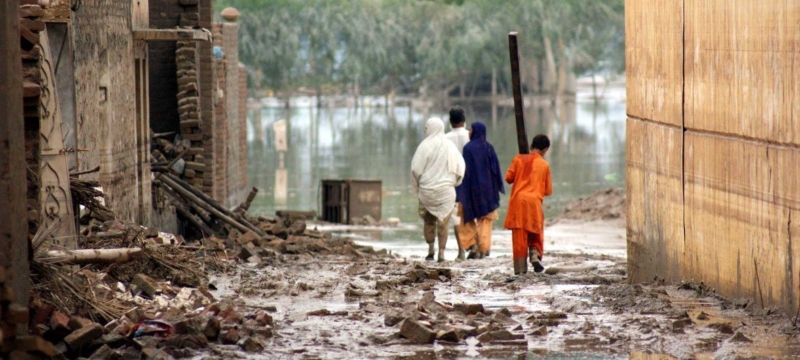Rarely have countries been so incapable of responding to challenges, as is the case with Pakistan. Last year, the worst flood in our history hit millions of poor Pakistanis, wiping away their livelihoods and depriving them of their dwellings and, in many cases, land entitlement. It was due to the resilience of the Pakistani people that some post-flood rehabilitation took place. Like much else in the country, people took their lives into their own hands and the state, at best, was a secondary player. Media focus remained on the politicisation of the response to the natural disaster and making heroes out of army battalions which, at least on paper, are subordinate to the elected executive.
What has happened since then? I was intrigued to note an advert a month ago in the national newspapers wherein a multilateral agency was hiring a programme manager for ‘early recovery’ after floods! Multilaterals reflect the speed and bureaucratic labyrinths of the government and, therefore, this little notice seemed farcical at best. Forget early recovery, we are now back in the monsoon season. And the federal and provincial governments appear to be as ill-equippedas before.
I was part of a team that undertook post-flood assessment and had a chance to interact with key stakeholders last year. The attitudes of some high level public officials are a subject of a satirical book rather than this short piece. In summary, their assumption was that the poor were resilient and knew how to deal with disasters and that life goes on. Several of the recommendations that we offered remain unimplemented, chiefly those relating to local governments.
The provinces have not learned the greatest lesson of last year’s flood. Without effective local governments, natural disasters cannot be adequately handled. A year has passed and there seems to be no progress on this critical area. Centrally appointed officials at district levels are no substitute for tehsil and union council officials and volunteers. Civil defence remains moribund and, most importantly, provincial disaster management authorities (except Khyber-Pakhtunkhwa) have barely taken off and are simply under-resourced.
Most worryingly, the National Disaster Management Authority (NDMA) has moved from one crisis to another. Its funding is limited, its staffing capacities suboptimal. But individuals are not enough when you need functional and efficient institutions. Despite the 18th Amendment, the NDMA’s role in national coordination is vital. Sadly, it is unclear if the NDMA has been strengthened after last year’s calamity, and all evidence points towards bureaucratic infighting and slovenliness.
Worst, several damaged dykes from last year are still unrepaired. It is also not clear if provincial irrigation departments have rehabilitated the vulnerable points or not. It is about time the government takes the public into confidence. The rains have started already, killing dozens, and they are likely to hit Khyber-Pakhtunkhwa and northern Pakistan soon. Sindh and south Punjab remain as vulnerable as before.
This is the time for action and quick planning. The media and civil society should ensure that the government does not fail in discharging its basic responsibilities. Democratic governments must demonstrate commitment to the vulnerable poor. Furthermore, a national climate change policy and provincial strategies are desperately needed. How long will we postpone ‘policy’ for short-term political gains?
Published in The Express Tribune, July 2nd, 2011.



